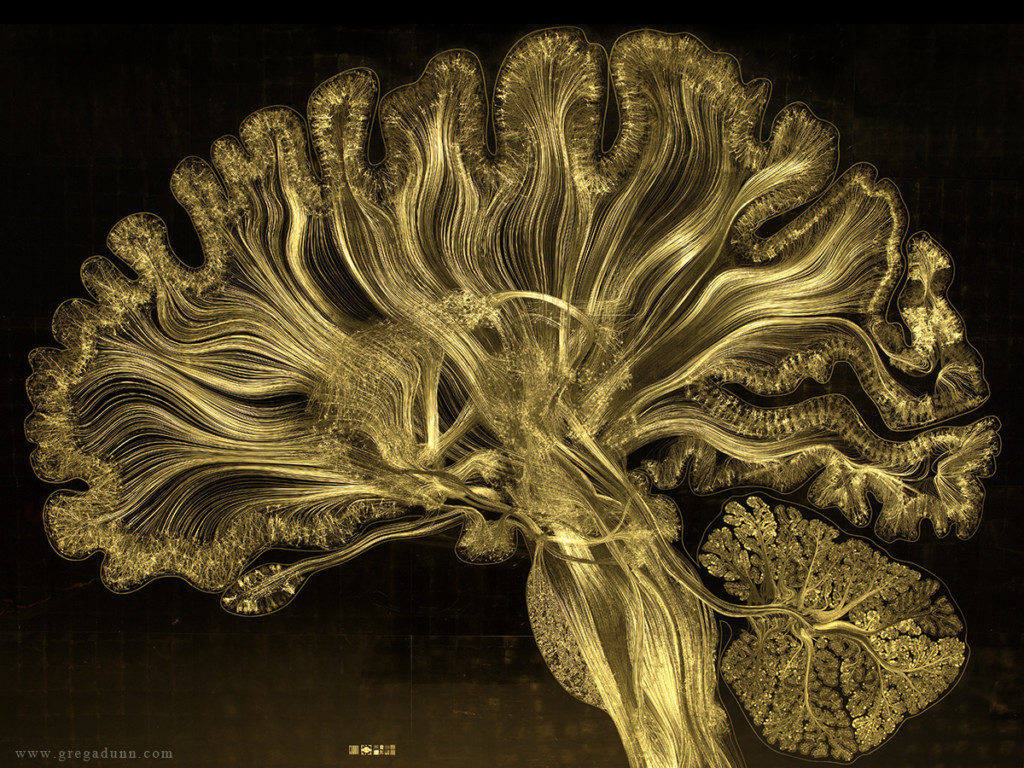
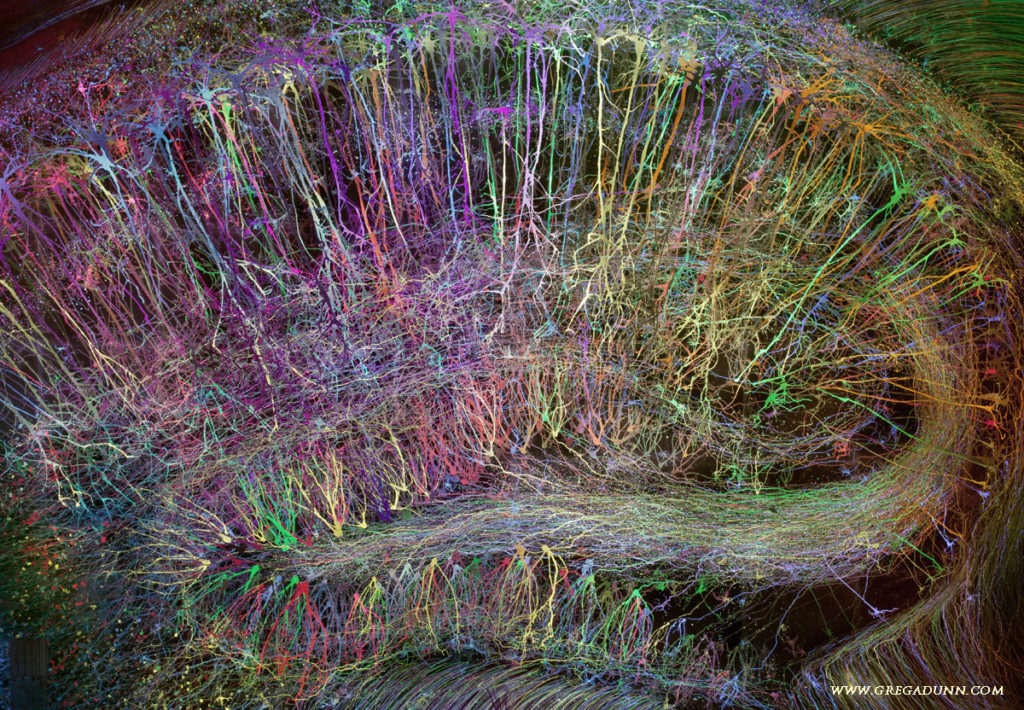
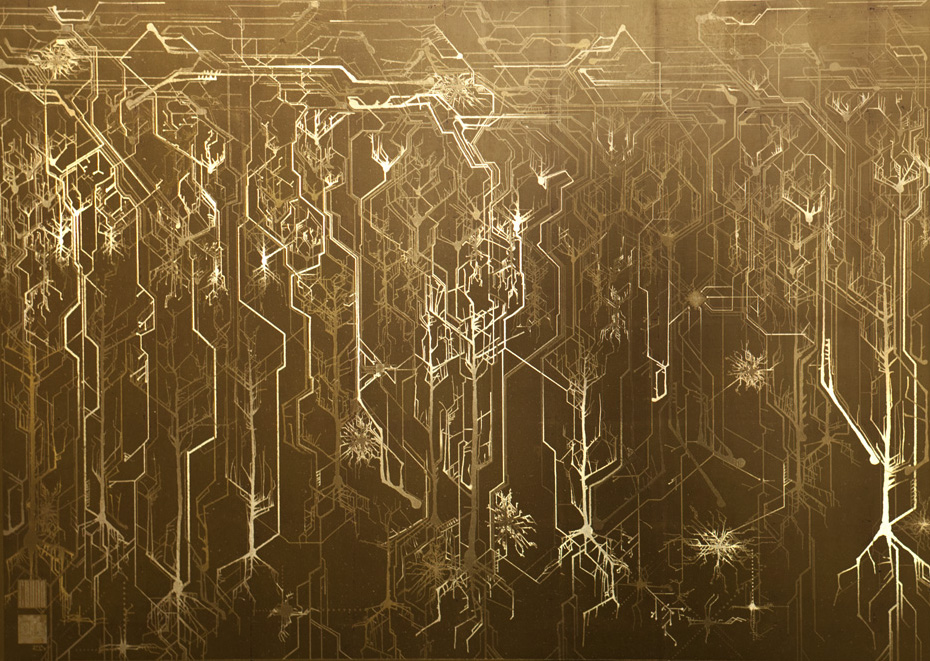
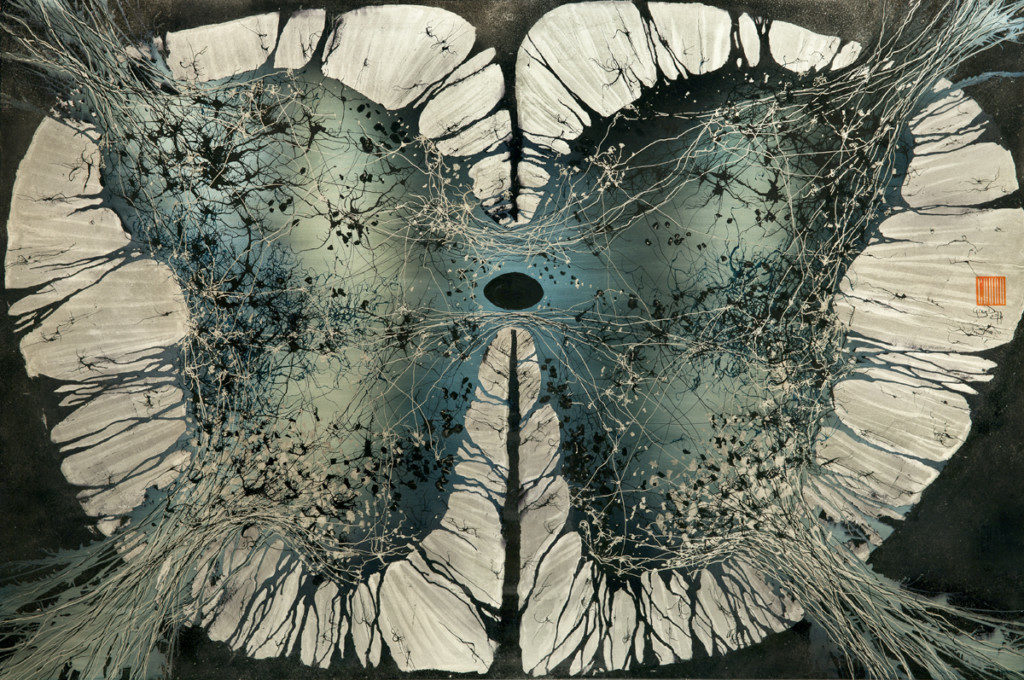
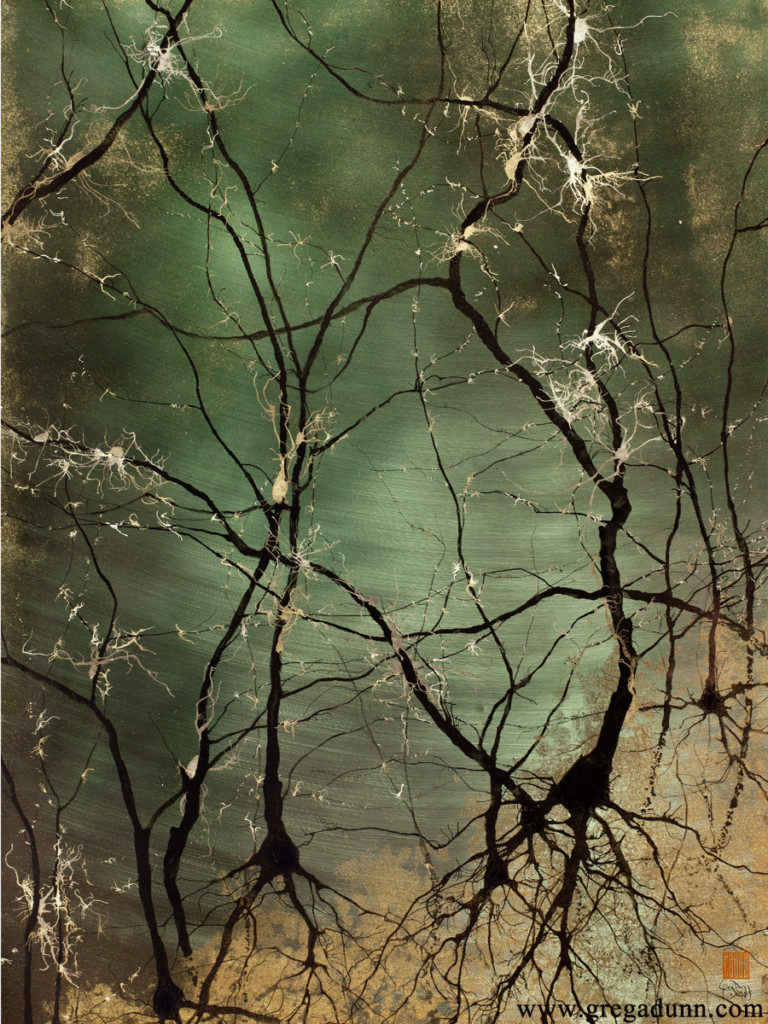
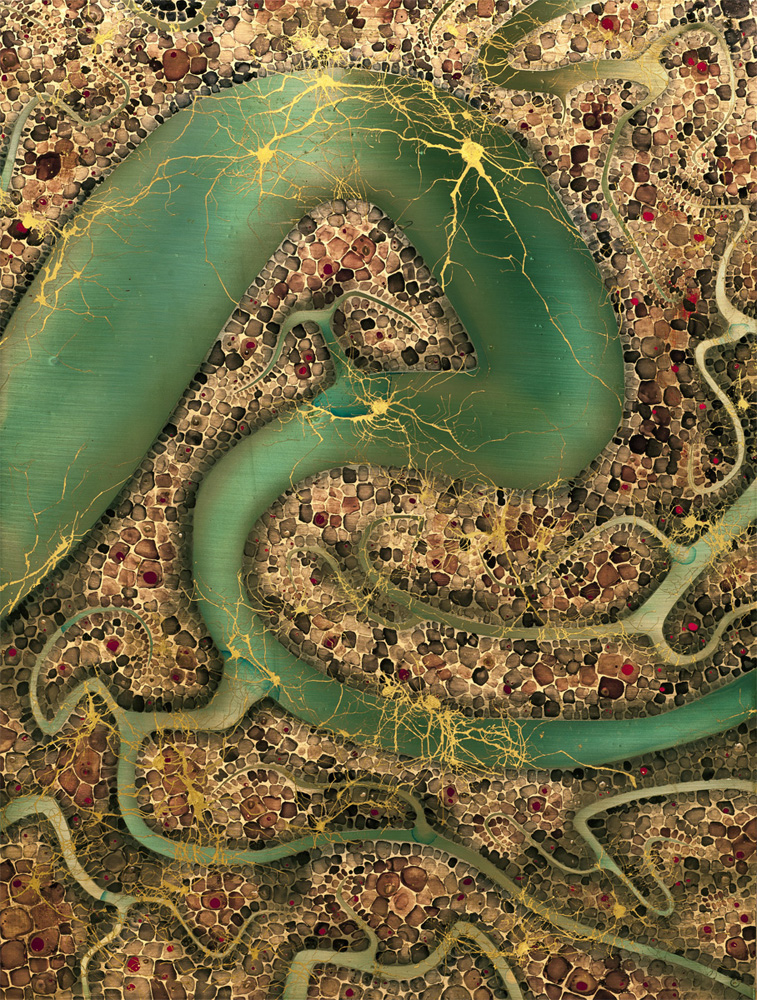
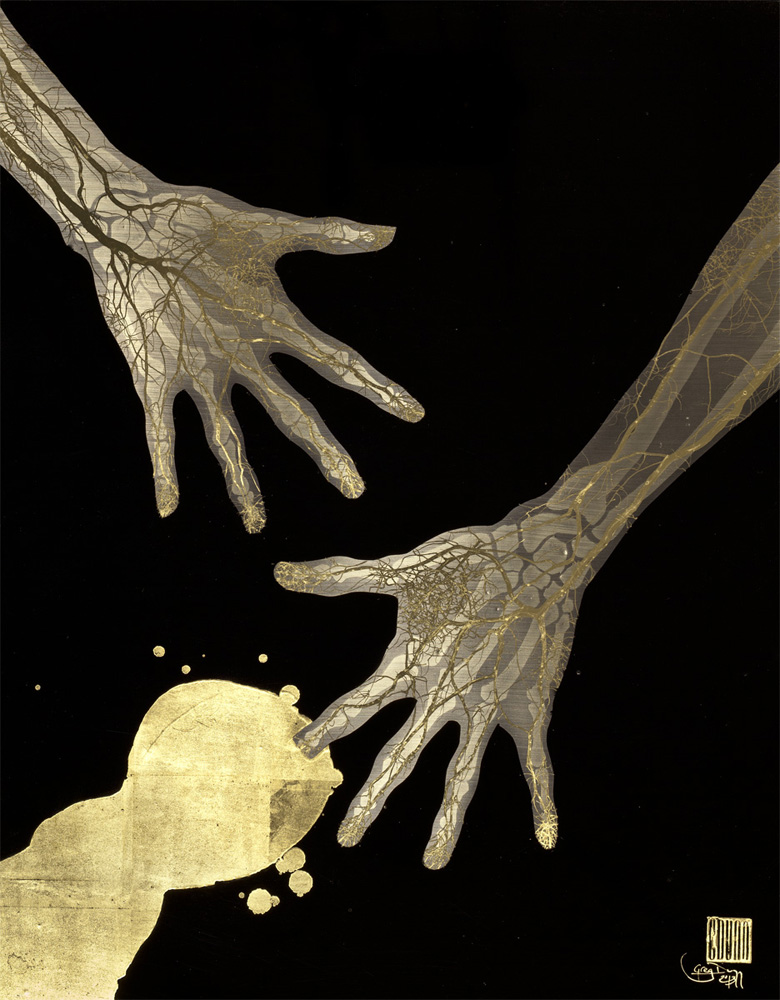

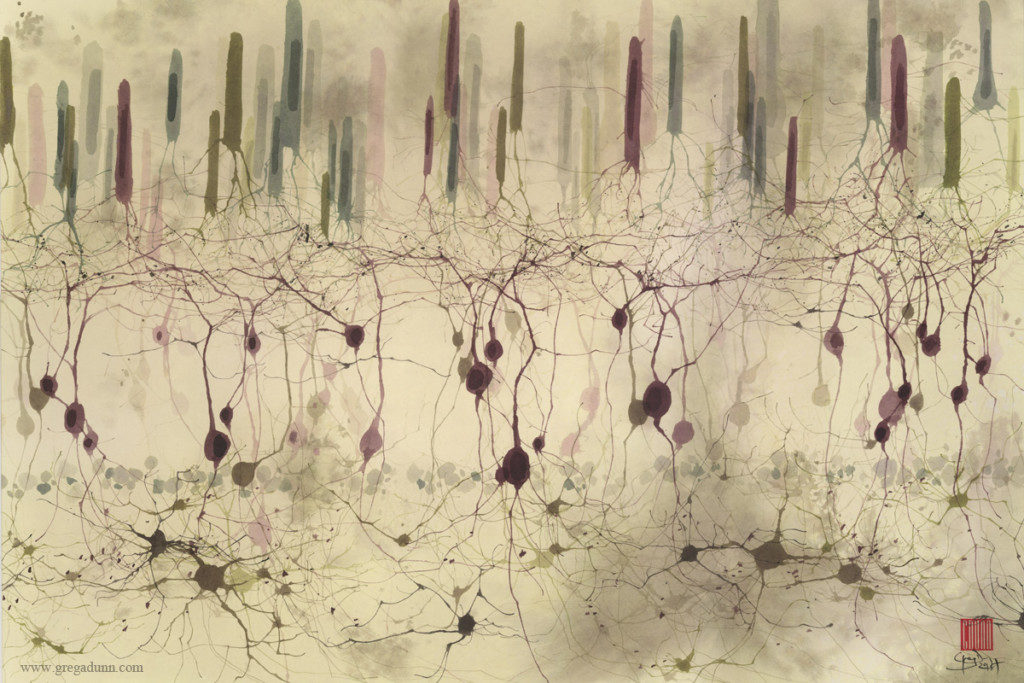


I enjoy Asian art. I particularly love minimalist scroll and screen painting from the Edo period in Japan. I am also a fan of neuroscience. Therefore, it was a fine day when two of my passions came together upon the realization that the elegant forms of neurons (the cells that comprise your brain) can be painted expressively in the Asian sumi-e style. Neurons may be tiny in scale, but they posess the same beauty seen in traditional forms of the medium (trees, flowers, and animals).
I admire the Japanese, Chinese, and Korean masters because of their confidence in simplicity. I try to emulate this idea.
In October 2011 I finished my doctorate in Neuroscience at University of Pennsylvania. Since then I have been devoting my time to painting. When I’m not doing this I’m enjoying reading scientific papers, playing music and watching “How Its Made”.
Greg Dunn
About Self Reflected
Dr. Greg Dunn (artist and neuroscientist) and Dr. Brian Edwards (artist and applied physicist) created Self Reflected to elucidate the nature of human consciousness, bridging the connection between the mysterious three pound macroscopic brain and the microscopic behavior of neurons. Self Reflected offers an unprecedented insight of the brain into itself, revealing through a technique called reflective microetching the enormous scope of beautiful and delicately balanced neural choreographies designed to reflect what is occurring in our own minds as we observe this work of art. Self Reflected was created to remind us that the most marvelous machine in the known universe is at the core of our being and is the root of our shared humanity.
About Microetchings
Microetchings are handmade lithographs that manipulate light on a microscopic scale to control the reflectivity of metallic surfaces in precise ways. These techniques were invented by Dr. Greg Dunn and his colleague Dr. Brian Edwards in order to change the way in which the viewer experiences a painting. Please note that these microetchings are designed to evolve based on the moving perspective of the viewer and are impossible to capture in still images.











